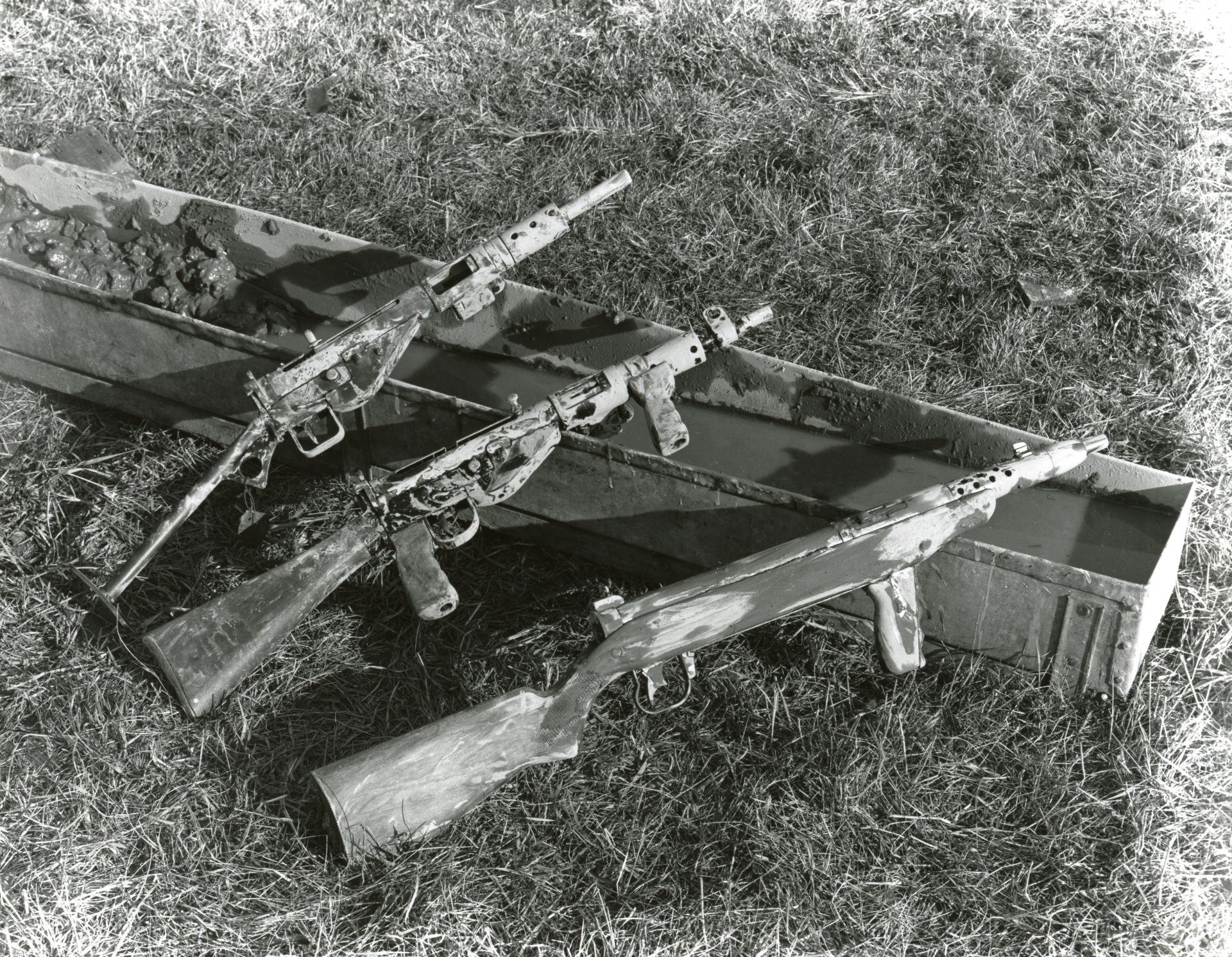 Small Arms Ltd’s Experimental Firearms | CSMMI MILART. Small Arms Limited - The Long Branch Story 1939-1945 (Part 2)
Small Arms Ltd’s Experimental Firearms | CSMMI MILART. Small Arms Limited - The Long Branch Story 1939-1945 (Part 2) . Carbine, Machine, Canadian Experimental
When SAL had approached DVSA for funding for the development of a machine carbine, DVSA’s Director, Colonel J.L. McAvity advised SAL that, despite the stream of complaints from the field about the Sten, he could not get funding from the ATDB, unless the General Staff issued a requirement for a new machine carbine. SAL returned to the charge on 28 August, 1944 and McCavity obtained approval for the project at the ATDB’s September 5, 1944 meeting. This was based on a General Staff specification which called for a 9mm Parabellum, selective fire weapon with: satisfactory reliability in the most adverse conditions; weighing no more than 6 lbs. (2.7 kg) without a magazine; and capable, when firing single shots, to place five bullets in a 12 inch x 12 inch (30cm x 30cm) group at a range of 100 yards (90 metres). To improve accuracy, the cyclic rate was to be no more than 500 rpm. It was to have compact, short, 30-60 round magazines. To minimize stoppages, the magazine lips were to be incorporated in the body of the gun. The butt was to be removable, and the metal parts rust-proof. Finally – an aesthetic dig at the homely Sten – its appearance should inspire the user’s confidence.
The project got off to a slow start as SAL had been concentrating its development work on its self-loading, sniper and lightweight rifle designs. In December 1944, two of its designers George Kersey and Anton Rosciszewski, came up with an innovative “positive feed,” with the magazine mounted horizontally. A rocker arm worked by the bolt’s blow-back action, removed the round from the magazine, rotated it 90o, and chambered it. This arrangement protected the magazine and ammunition feed from dirt dust and sand – albeit at the expense, in early versions, of more misfeeds and ejection malfunctions. The trigger was based on a design Rosciszewski had developed for a modified Sten. Pressure on the top of the trigger fired the weapon in a fully automatic mode while pressure on the bottom of the trigger fired the weapon semi-automatically.
The Machine Carbine designed by Anton Rosciszewski of SAL, note the dual-action trigger which allowed selective fire. MilArt photo archives
The first pilot was completed in May 1945, and by the end of July it had successfully test fired 6,000 rounds. At that time a second prototype was under construction with modifications to bring it down to the specified 6 lbs. weight limit (loaded weight was in fact somewhat more than 7 lbs. – 3 kg), and the weapon had a fixed wooden stock, with a wooden fore-grip.
